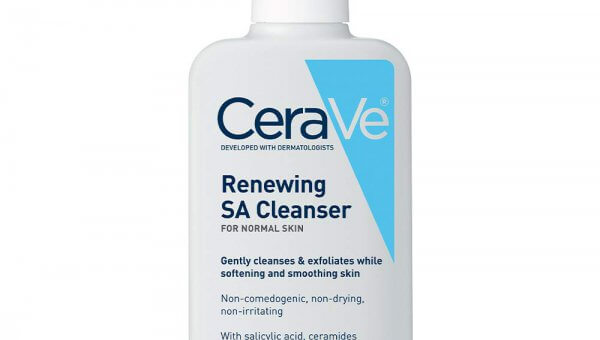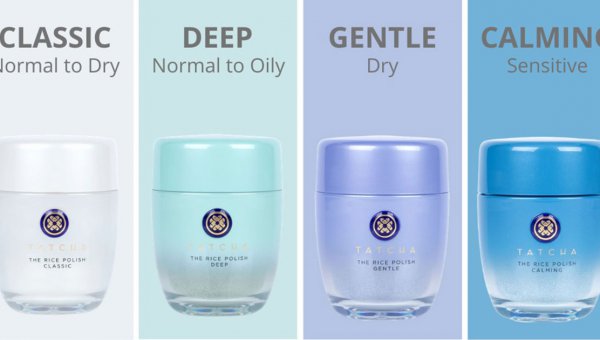Exfoliators
Exfoliation is an essential yet often overlooked step in maintaining healthy skin. Every 25 to 30 days, your skin cells go through different phases until they mature and come to rest at the top layer of your skin. This layer’s cells no longer contain internal fluids and are tightly packed together to form a protective barrier. You will naturally shed these dead cells, but sometimes they need a bit of help. Unless this accumulation is removed, your skin will eventually look and feel dull. This is where an exfoliator comes into play.
Skin exfoliators work by buffing away or dissolving dead skin cells, as well as dirt that has congested your pores. Moreover, they increase blood circulation and cell production. They’re usually added to a lubricating medium such as a cleanser or scrub. There are separate products for the face and the body, with gentler ingredients for the more delicate skin on your face. Before you incorporate one into your skincare routine, let’s begin with the fundamentals.
What are the Different Types of Exfoliator?
There are two ways to exfoliate your skin. The first is mechanical which we usually think of as rubbing or scrubbing, and the second is through the use of chemical recipes.
A. Mechanical Exfoliators
Mechanical or physical exfoliation involves using friction to slough off the top layer of the skin. They can be substances that are applied directly or tools that are used to buff away impurities from the skin’s surface. Either way, you have to use a bit of force to make them work.
1. Scrubs
You’re probably already familiar with face scrubs and body scrubs. These are cleansers that have materials mixed in them to assist in removing dead skin and dirt as you rub. Commonly used exfoliating materials are granules such as salt, sugar, or ground coffee or nutshells. Some products also use microbeads (tiny polyethylene beads).
Scrubs are popular because they leave your skin with a squeaky-clean feeling. However, there are some caveats. Ground or crushed materials like walnut shells or coffee beans have irregularly-shaped particles that can cause micro-tears on the skin. Gradually, this damage weakens the skin’s barrier and makes you more vulnerable to dryness and redness.
Microbeads have a smoother surface that won’t scratch your skin as much. However, like all plastics, they can affect the environment and human health. A report by the UK House of Commons Environmental Audit Committee stated that each time a person takes a shower using a product that contains microbeads, up to 100,000 particles wash down the drain and into the ocean.
Thankfully, skincare companies have found biodegradable substitutes that are fine enough to not cause micro-tears. If you prefer to exfoliate with a scrubbing facial or body wash, look for one that uses microcrystalline wax beads or jojoba esters.
2. Brushes or Sponges
Bristle brushes are used to remove layers of dead skin. They can be used in conjunction with your regular facial or body wash. Sponges, on the other hand, are also effective but tend to be less abrasive than brushes. It’s also easier to create a lather with a sponge.
The most important thing to keep in mind is to use gentle, circular motions. Rubbing too vigorously can cause damage to the skin barrier.
B. Chemical Exfoliators
Different acids fall under chemical exfoliators. You leave them on the skin for a few minutes to allow the chemicals to dissolve dead skin cells, dirt, and sebum. After rinsing, you will notice that your skin is brighter and smoother.
1. Alpha Hydroxy Acids (AHA)
AHAs are water-soluble acids that are usually derived from sugary fruits. They help peel away the top layer of the skin to reveal the plumped new skin underneath. They boost collagen production and speed up cell turnover. A common ingredient in anti-aging products, they also have a moisturizing effect due to their water-binding properties.
Some examples of AHAs are glycolic acid, citric acid, mandelic acid, and lactic acid. Of these, lactic acid is the gentlest due to its larger molecular size that don’t penetrate skin too deeply. Unlike the others which come from plants, it is derived from lactose in milk. Studies show that treatment with lactic acid can increase epidermal firmness and thickness. It can also improve the appearance of fine lines and wrinkles.
The maximum concentration of AHAs in an exfoliating product shouldn’t be more than 15%. If you’re new to AHAs, don’t use them every day until you get used to them. Since it causes skin layers to peel (even if it’s not visible), you should wear sunscreen religiously to prevent burns and age spots.
2. Beta Hydroxy Acids (BHA)
Oil-soluble Beta Hydroxy Acids are great for treating acne- or blemish-prone skin. Acne can take the form of whiteheads or blackheads, but when they’re infected by bacteria, they could develop into pimples and cysts. Oily skin is more susceptible to such breakouts because the sebaceous glands produce too much sebum.
BHAs go deep into the pores to dissolve congestion and kill bacteria. The most popular BHA is salicylic acid which you can find in CeraVe’s SA product line. Besides melting away dirt and oil within the pores, they also have a soothing effect on irritated skin.
Other examples of BHAs are tropic acid and trethocanic acid. Like AHAs, they can reduce the look of fine lines and wrinkles and improve overall skin texture. However, they have been shown to cause less irritation than AHAs.
3. Enzymes
Enzyme exfoliators are the new(ish) kids on the block. The more common ones are formulated with active ingredients from papayas, pineapples, and figs. Thought to be gentler than AHAs, they likewise help to shed skin cells by breaking down the bonds that hold them together. Enzymes promote proteolytic (protein-digesting) action while improving skin tone and blood flow.
Enzymes have the added benefit of skin protection. By capturing free radicals in the environment, they prevent damage to the skin that’s caused by pollution, bacteria, and sunlight. Because of that, more and more skincare companies are turning to enzymes as their primary exfoliating ingredient. For example, Tatcha’s Foaming Enzyme Powders use rice and papaya enzymes.
How Do You Choose the Right Exfoliator?
The best exfoliation tool or method depends on your skin type and concerns. Whether you choose mechanical or chemical exfoliators, follow the manufacturer’s instructions to the letter. Correct usage will help you to avoid damaging or irritating your skin.
A. Dry Skin
Dry or flaky skin requires regular exfoliation to reduce dullness and reveal a natural glow. Avoid mechanical exfoliators because they can cause more dryness and lead to micro-tears. Instead, try glycolic acid which promotes cell turnover.
B. Sensitive Skin
Never use mechanical exfoliators on sensitive skin. These will further irritate your skin and cause redness. Use a mild chemical exfoliator and consult your dermatologist if you need to switch products.
C. Oily Skin
Oily skin can tolerate manual exfoliation because it’s usually thicker than normal or dry skin. Furthermore, increased oiliness makes it more difficult for the skin to shed cells. To minimize breakouts, be sure to look for a non-comedogenic product.
D. Normal Skin
If your skin is normal and doesn’t have any complications, you can choose any method you like. Both chemical and physical exfoliators are fine, but you might need to experiment to find out which works best for you.
E. Combination Skin
Combination skin is characterized by oiliness in some areas (forehead, nose, chin) and dry skin in others (usually the cheeks). Alternate between chemical and mechanical methods. And don’t forget to moisturize right after.
What is the Correct Way to Use Exfoliators?
For physical exfoliators, rub the product on your skin gently in circular motions. You can use your hands or a tool such as a sponge or brush. In contrast, chemical exfoliators should be left alone once they’ve been applied to the skin. Don’t go over the recommended time; even low concentrations can result in chemical burns if left on too long.
As for frequency, it depends on your skin type and the method of exfoliation you’re using. In general, once or twice a week is sufficient for normal to dry skin. Oily skin can tolerate more frequent exfoliation, up to three times a week. In any case, start slow while your skin is still getting used to the product or method.
Immediately stop exfoliating if your skin becomes red or inflamed. Unless you are under the supervision of a dermatologist, your skin shouldn’t be peeling. Strong chemical peels that have a high acid concentration are better left to the professionals.
Finally, always use a sunscreen to shield yourself from UV exposure. Your skin is especially sensitive after using an exfoliating product. To protect your skin from the two types of harmful UV rays (UVA and UVB), the Mayo Clinic recommends a broad-spectrum SPF.
Exfoliation is Vital for Healthy, Glowing Skin
Now that you know how exfoliators can benefit your skin, you should make them a part of your routine. With the correct tools and methods, you can uncover a fresh, even complexion. Not only do they decongest your skin, but you will also allow your other skincare products to work better. Your whole body will breathe a sigh of relief.
Types of Exfoliators
CeraVe Exfoliators
Exfoliating your skin is a vital step in maintaining a healthy glow. By removing dead cells from the skin’s surface and promoting cell turnover, smoother ...
Read MoreTatcha Exfoliators
A healthy skincare regimen requires regular exfoliation. Exfoliating sweeps away dead skin cells and dirt that can clog your pores. It brings new skin to ...
Read More

